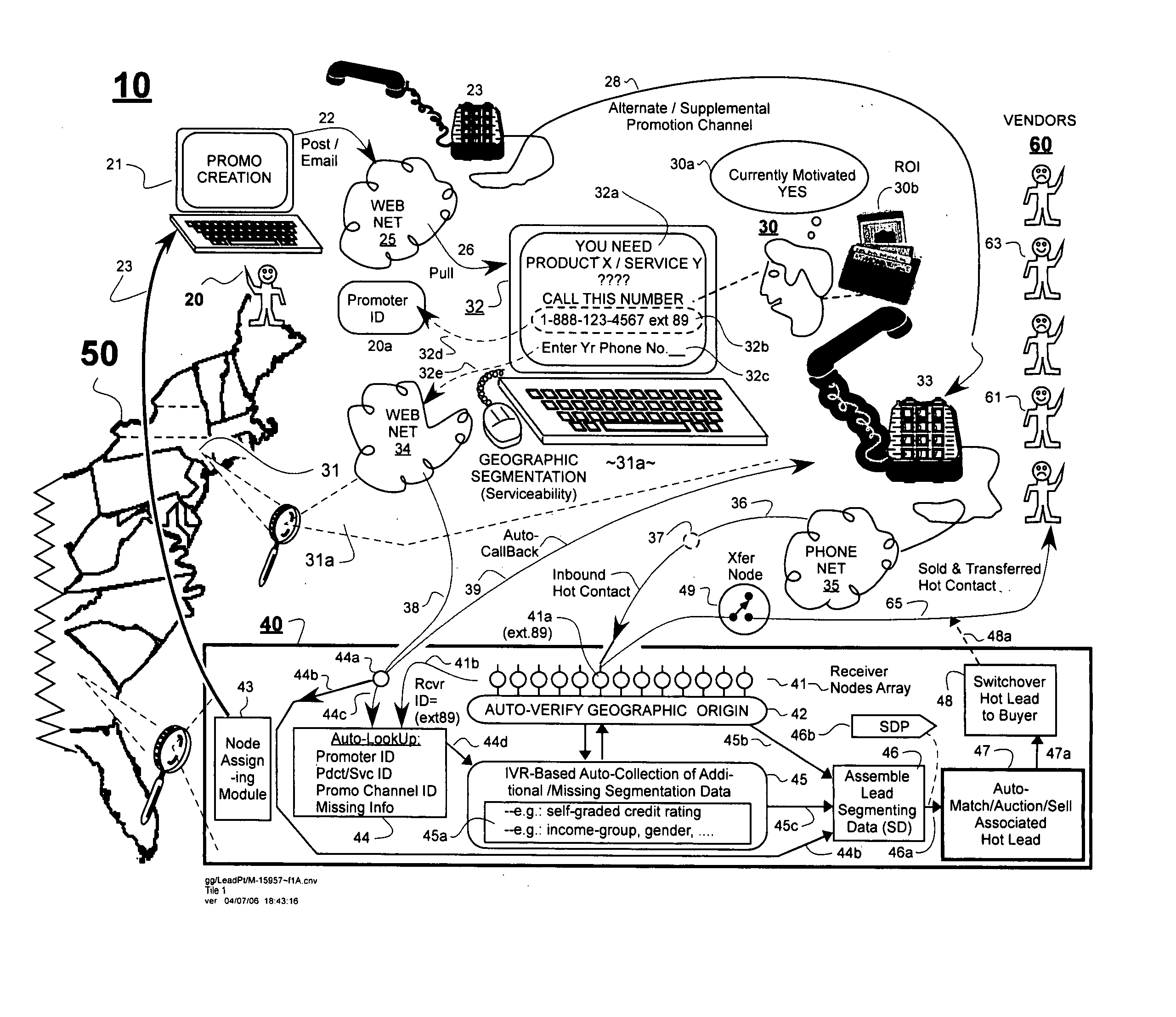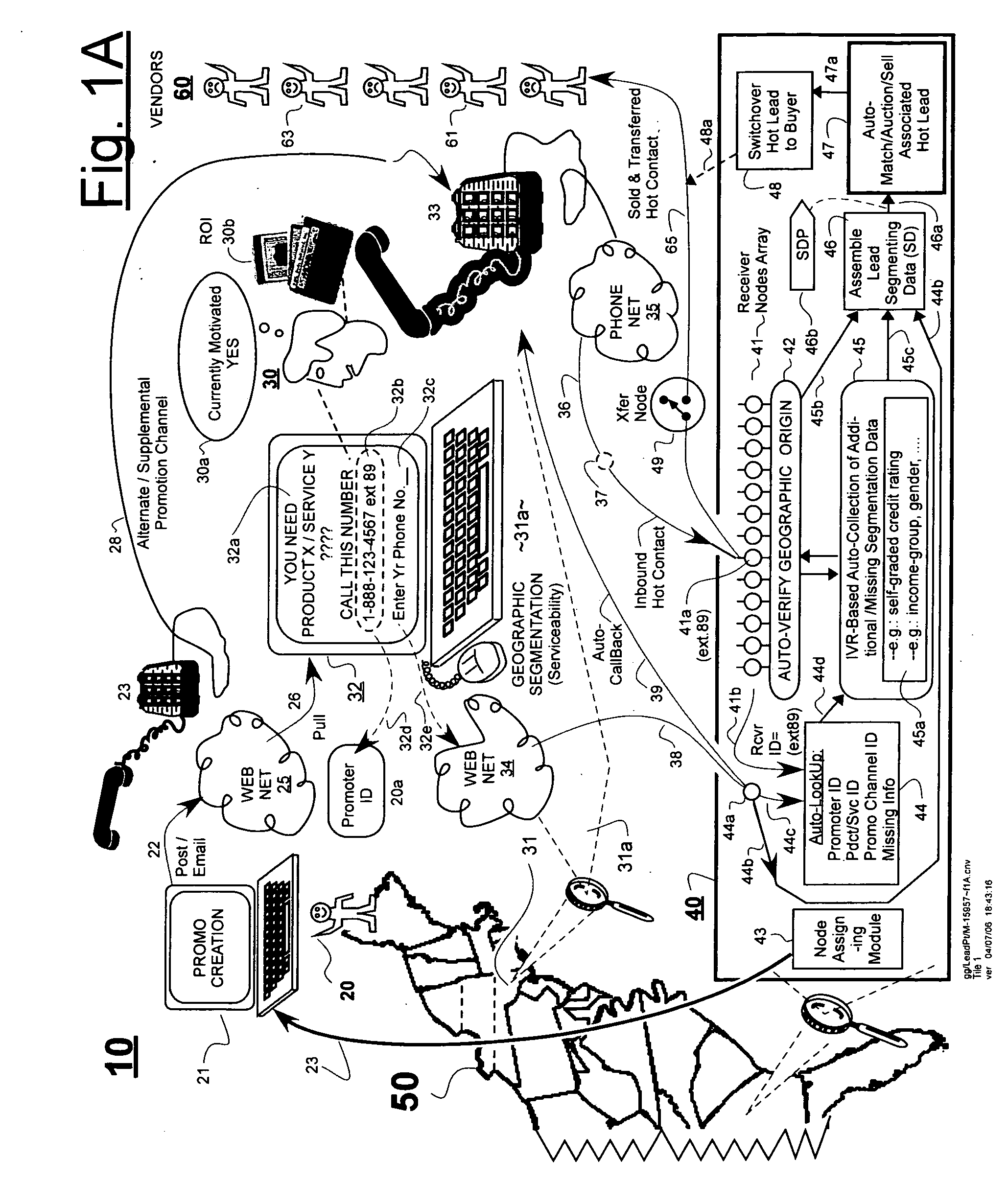Automated attachment of segmentation data to hot contact leads for facilitating matching of leads to interested lead buyers
a technology of segmentation data and hot contact leads, applied in data processing applications, instruments, marketing, etc., can solve the problems of inefficiency, time-wise ready consumers not always available, and time-wise ready vendors that cannot match time-wise ready consumers, etc., to achieve the effect of reducing the probability, avoiding waste of time, energy and/or money, and reducing the probability
- Summary
- Abstract
- Description
- Claims
- Application Information
AI Technical Summary
Benefits of technology
Problems solved by technology
Method used
Image
Examples
Embodiment Construction
[0031] Additional information regarding leads, their use and market segmentations will be discussed below with reference to FIG. 1B. However, given that the present disclosure is a continuation of, with additions (CIP) to earlier filed and above incorporated disclosures; this part of the description leaps directly into the more advanced subject matter of FIG. 1A.
[0032]FIG. 1A is a block diagram of a hot-contacts interconnect system 10 which includes on-the-fly, segmentation-data attaching means (e.g., IVR unit 45) in accordance with the disclosure. The segmentation-data attaching means is used for gathering segmentation data on-the-fly as a potential consumer 30 engages with the system 10 and navigates through one or more telecommunication pathways in route to connecting with a potential vendor (61) of sought goods and / or services. For purpose of example, item 50 represents a map of the Eastern part of the United States of America. A so-called sponsor, lead initiator, or lead devel...
PUM
 Login to View More
Login to View More Abstract
Description
Claims
Application Information
 Login to View More
Login to View More - R&D
- Intellectual Property
- Life Sciences
- Materials
- Tech Scout
- Unparalleled Data Quality
- Higher Quality Content
- 60% Fewer Hallucinations
Browse by: Latest US Patents, China's latest patents, Technical Efficacy Thesaurus, Application Domain, Technology Topic, Popular Technical Reports.
© 2025 PatSnap. All rights reserved.Legal|Privacy policy|Modern Slavery Act Transparency Statement|Sitemap|About US| Contact US: help@patsnap.com



